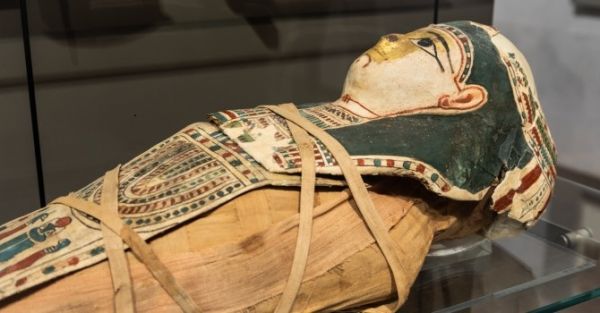Mummification in Ancient Egypt
In the realm of ancient Egypt, mummies stand as enduring symbols of a civilization's fascination with the afterlife and the preservation of the human form. The practice of mummification, a blend of art, science, and spirituality, granted the deceased a chance at eternal existence. Within the enigmatic tombs and lavish sarcophagi lie tales of history, culture, and the intricate rituals that shaped their destiny.
Egyptian Mummies: Gateway to Immortality
Egyptian mummies are a testament to the profound beliefs and practices of the ancient Egyptians. These preserved bodies were intended to ensure a smooth transition to the afterlife, where the soul would reunite with the body for eternal existence. Mummification, a complex process, was reserved for royalty, elites, and those who could afford it.
Mummification in Ancient Egypt: The Sacred Art of Preservation
Mummification was rooted in the belief that the body was essential for the soul's journey in the afterlife. The process itself was an elaborate and meticulous affair. It involved the removal of organs, dehydration, wrapping the body in linen bandages, and encasing it in ornate coffins. The ritualistic nature of mummification was a fusion of cultural traditions and spiritual significance.
Mummification Process in Ancient Egypt: A Journey Beyond Death
The process of mummification began with the removal of internal organs, which were preserved in canopic jars. The body was then dried with natron, a type of salt, to prevent decay. After a thorough cleansing, the body was wrapped in layers of linen bandages. Amulets and charms were placed between the layers to provide protection and guidance in the afterlife. Finally, the mummy was placed in an intricately decorated coffin and often nested within several layers of coffins.

Famous Egyptian Mummies: Echoes of the Past
- Tutankhamun (King Tut): Perhaps the most famous mummy, Tutankhamun's tomb held a trove of treasures and insights into royal life.
- Ramesses II (The Great): A grand ruler, Ramesses II's mummy showcased the meticulous artistry of mummification.
- Cleopatra: The legendary queen's tomb remains elusive, yet her legacy endures as a symbol of Egyptian royalty.
- Hatshepsut: The powerful queen's mummy revealed her significant contributions to ancient Egypt's history.
- Seti I: The father of Ramesses II, Seti I's well-preserved mummy offered a glimpse into regal lineage.
- Nefertari: The beloved wife of Ramesses II, Nefertari's tomb revealed her esteemed position in the dynasty.
- Amenhotep III: Known for his opulent reign, Amenhotep III's mummy held insights into ancient medical practices.
- Ramses III: The king's mummy disclosed both his power and his demise at the hands of a conspiracy.
- Ahmose I: The mummy of the founder of the Eighteenth Dynasty unveiled the roots of a dynasty's rise.
- Meritamen: Daughter of Ramesses II, Meritamen's mummy illuminated familial ties and the lives of princesses.
Preservation of Legacy: Insights and Discoveries
The examination of famous Egyptian mummies has yielded invaluable insights into ancient health, genetics, and society. Advanced technologies such as CT scans and DNA analysis have unveiled details about their lives, diseases, and familial relationships. The significance of these findings extends beyond historical curiosity, shedding light on the evolution of medical practices and human history.
Eternal Remembrance: The Legacy of Mummies
Egyptian mummies continue to capture the imagination of the modern world, embodying a civilization's profound beliefs and reverence for the past. They offer a tangible connection to a distant era, where rituals of life and death were woven together with intricate care. As time marches on, these silent guardians of history ensure that the stories of pharaohs, queens, and commoners endure, reminding us of the rich tapestry that is human history.
Best Egypt Private Tours 2025
| Tour | Itinerary | Price |
|---|---|---|
| Luxor and Aswan Travels | 4 Days | $ 665 |
| Cairo Holiday Packages | 5 Days | $ 819 |
| Cairo to Petra Tour | 7 Days | $ 975 |
| Cairo and Luxor Holidays | 5 Days | $ 975 |
| Egypt and Dubai Tours | 8 Days | $ 1020 |
| Turkey and Egypt Tours | 8 Days | $ 1060 |
| Egypt Overland Tours | 8 Days | $ 1105 |
| Wheelchair Accessible Nile Cruise | 4-5 Days | $ 1145 |
| Cairo and Istanbul Tours | 12 Days | $ 1510 |
| Pyramids and Nile Cruise Holidays | 8 Days | $ 1510 |
